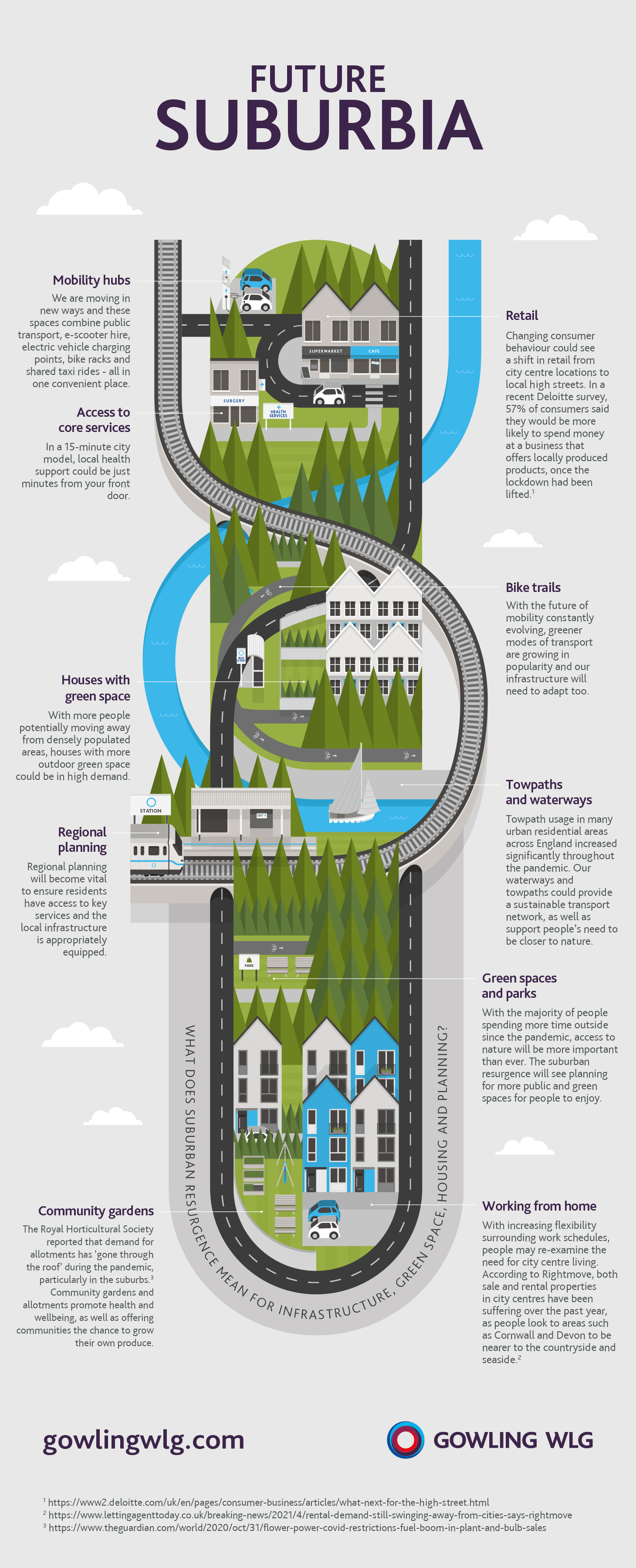Ben Stansfield
Partner
Article
3
The COVID-19 pandemic has affected the way we live our lives on so many levels. As a result, the idea of suburban resurgence is more topical than ever before.
We've taken a closer look at what this could mean for infrastructure, green spaces, housing and planning - looking at what this might mean for how we live in the future.

Can the possibility of a smarter and greener city be achieved without the use of EVs? Check out our infographic explaining 10 things you didn't know about EVs and their charging points
NOT LEGAL ADVICE. Information made available on this website in any form is for information purposes only. It is not, and should not be taken as, legal advice. You should not rely on, or take or fail to take any action based upon this information. Never disregard professional legal advice or delay in seeking legal advice because of something you have read on this website. Gowling WLG professionals will be pleased to discuss resolutions to specific legal concerns you may have.